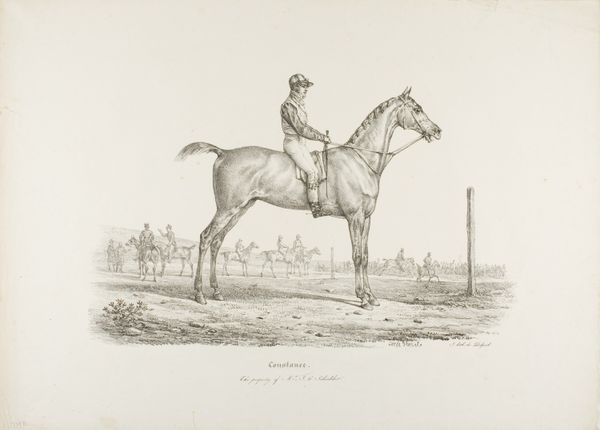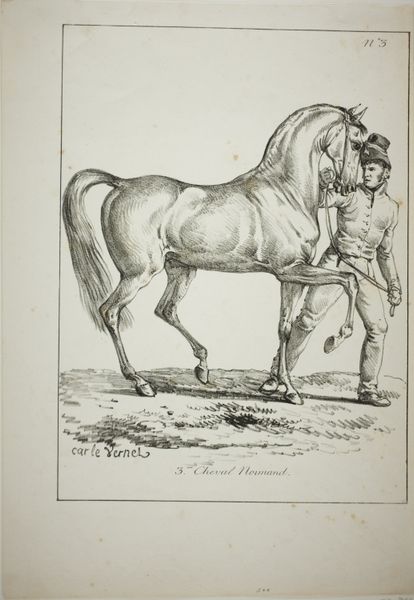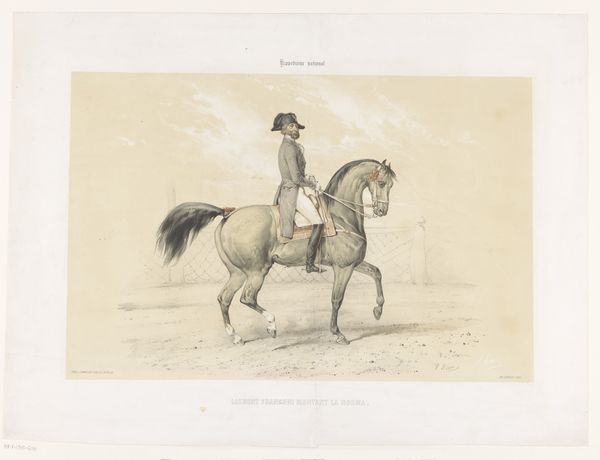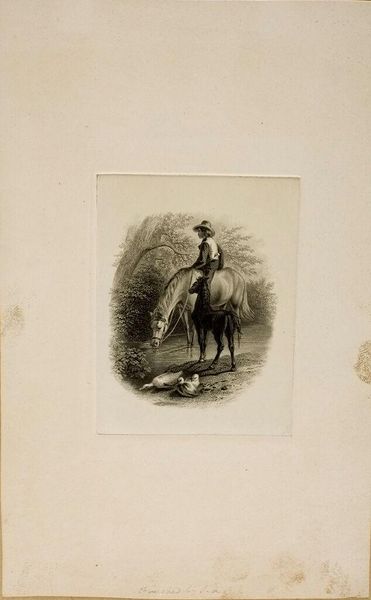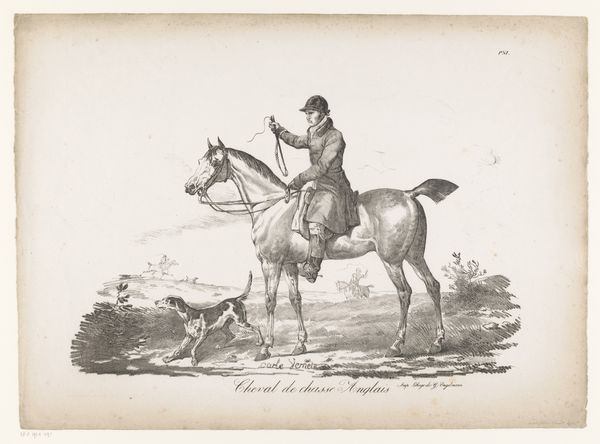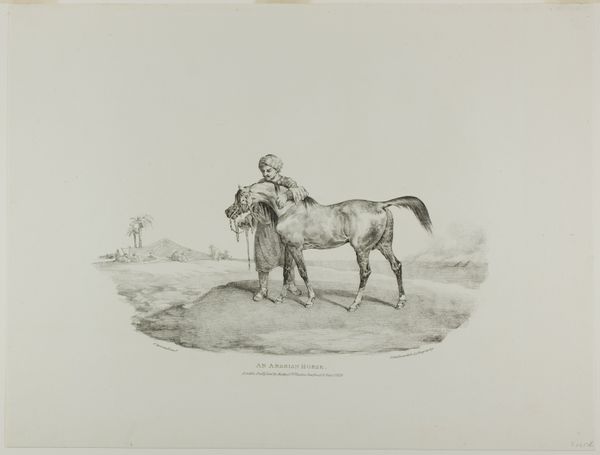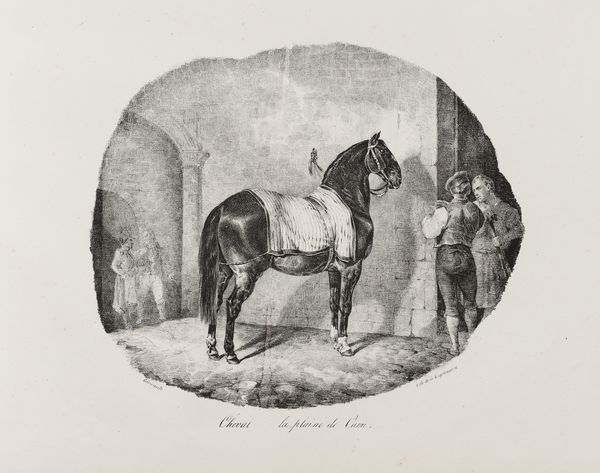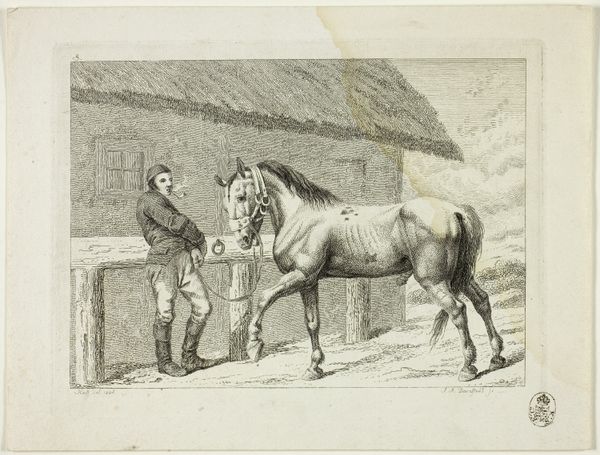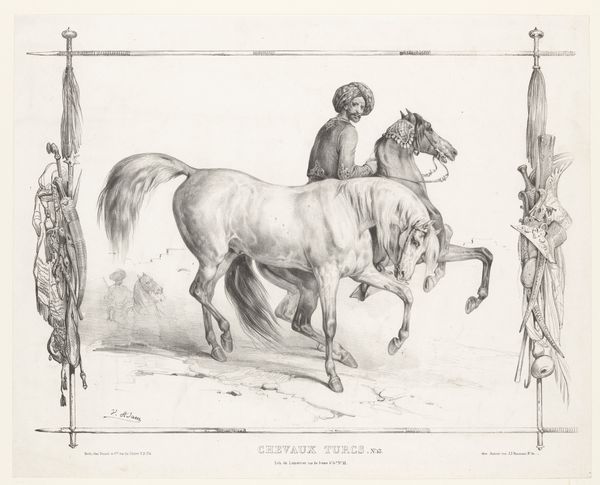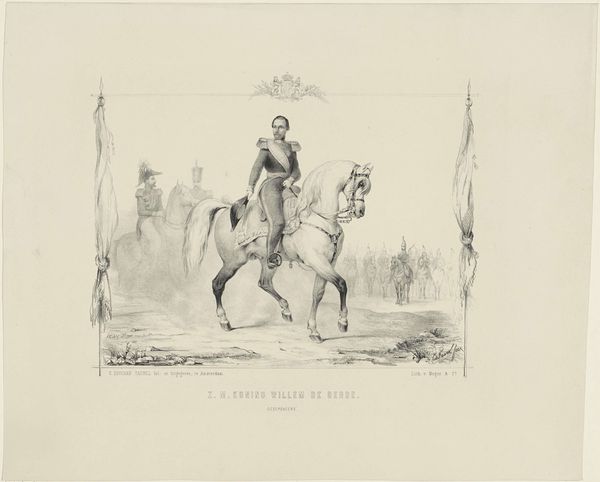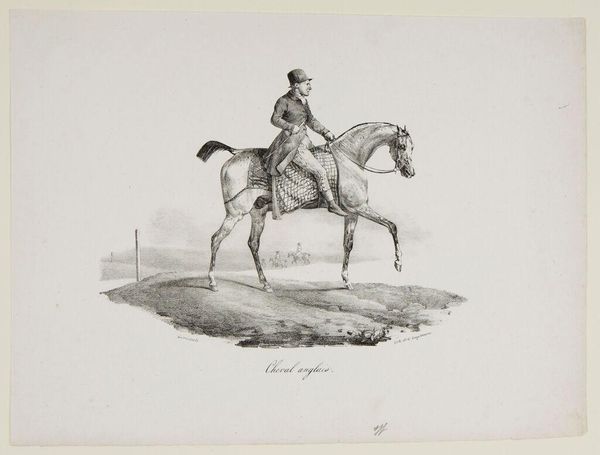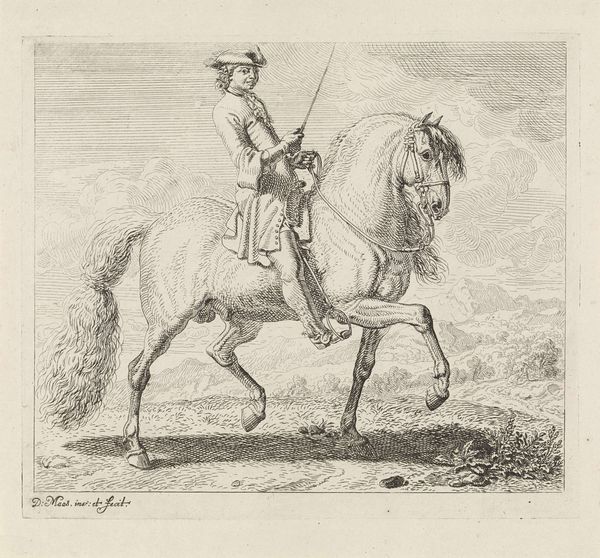
drawing, engraving
#
portrait
#
drawing
#
landscape
#
romanticism
#
horse
#
engraving
Dimensions: height 420 mm, width 570 mm
Copyright: Rijks Museum: Open Domain
Curator: Well, hello there. The engraving before us, "Staande man houdt paard bij de teugels," or "Standing Man Holding a Horse by the Reins," was completed around 1822 by Carle Vernet, and now resides in the collection of the Rijksmuseum. I think what’s particularly amazing about this piece is how, even though it's rendered with such delicate lines, it conveys such a sense of robust energy! Editor: My first impression is how melancholic it seems. Despite the controlled stance of the horse, and the rather bland, almost resigned expression of the man, there’s an undeniable quiet sadness in the overall scene. Almost as if the horse is yearning to run free. It definitely has romantic vibes. Curator: Absolutely. Vernet was really hitting his stride within the Romantic movement, emphasizing feeling and emotion above all. You feel that tug, right? That push and pull. There's freedom just over that distant fence with other horses, but a controlled world of humans in the here and now. He even gets that tension into the taut line of the horse’s lifted leg. Editor: And I find it quite telling how the engraving subtly illustrates power dynamics. We see the clear dominance the man wields, almost nonchalantly, yet there's also a sense of codependency between them. Consider the history: Horses served a largely utilitarian purpose, tied to the landed gentry and empire, so what we see isn't merely companionship but enforced servitude. Curator: Enforced servitude – you are definitely an activist, haha. Although, it reminds me about some childhood experience seeing those gorgeous animals only on farms and never out roaming free. It struck me, even then, how completely these majestic beings had been subdued to serve our needs. Vernet makes me see this, but through an artistic prism. Editor: Exactly, the artist holds a mirror to society! Even the seemingly idyllic landscapes that back-drop portraits such as this contain hidden commentaries, if we’re willing to look beyond just surface-level aesthetics. The landscape is beautiful, but it’s also a site of control. Curator: A sobering thought, isn't it? Still, looking at this piece, with all of its textures captured through meticulous lines, is breathtaking. Editor: Yes, definitely much to unpack and consider – from equine beauty to the ethical complexities of their roles through history, which lingers within the scene long after we leave.
Comments
No comments
Be the first to comment and join the conversation on the ultimate creative platform.
